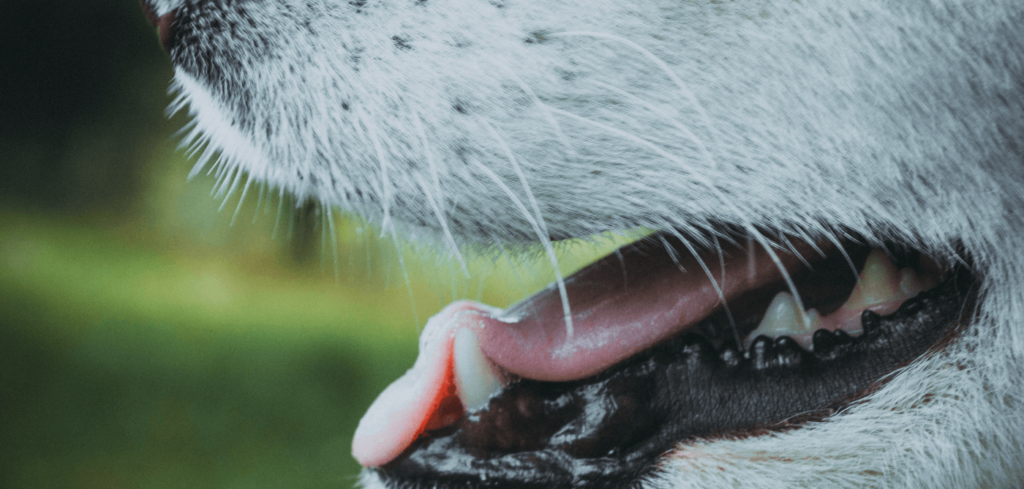
If you’re like me, you probably worry about the health of your dog from time to time…
And this worry gets especially bad when you notice something that seems out of the ordinary…
Take, for example, a dog’s whisker bumps. What are they? Are they caused by a medical problem? Or are they something that’s completely normal and harmless?
Well, there are a lot of dog parents who ask those same questions, and in this article, we’re going to answer them by going over 5 potential causes for dog whisker bumps…
In the end, you’ll know if the bumps are harmless or if they’re the result of a medical issue that you should be concerned about…
Let’s get started…

Dog Whisker Bumps – 5 Potential Causes…
There are several reasons why dogs can get bumps under or near their whiskers. These bumps can be the result of canine acne, sebaceous cysts, a dog vibrissae, an allergic reaction, or an infection. Some of these issues will require treatment for your dog, and others are harmless or will resolve on their own…
Let’s take a closer look at each of these potential causes for bumps under your dog’s whiskers…
1. Canine Acne…
The first potential reason why your dog has bumps under his whiskers on his chin and around his mouth is canine acne…
Canine acne is very similar to human acne. It’s an inflammatory disorder that can affect the lips and skin on your dog’s muzzle…
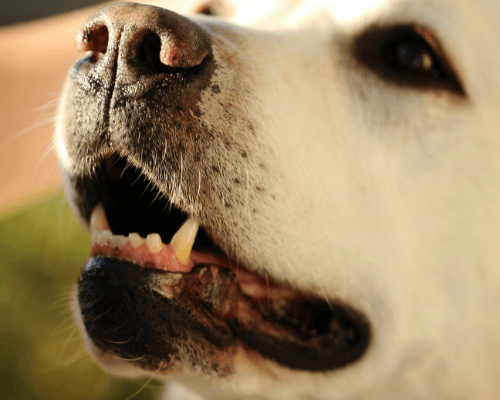
When a dog has acne, he (or she) will often have small red bumps form on his muzzle, and these red bumps are basically doggie pimples…
If your dog has a severe case of acne, he may also have bleeding, scabs, and swelling on his lips and muzzle…
Why Do Dogs Get Acne?
Experts are still trying to figure out why some dogs get acne. It used to be thought that the reason was basically the same as why humans get acne, which is mainly due to hormones…
However, there is some evidence that seems to indicate that that’s not the case. That being said, some breeds are more predisposed to have acne than others including…
- Great Danes
- Boxers
- Doberman Pinschers
- English Bulldogs
- German Shorthaired Pointers
- Rottweilers
- Weimaraners
- Mastiffs
In addition to that, it is now thought that trauma (such as a scratch, scrape, or cut) to a dog’s skin on the muzzle or chin can lead to acne…
And because the skin in these areas becomes inflamed, it can easily become infected as well.
What Is The Treatment For Canine Acne?
Many cases of canine acne can be treated with an over-the-counter drug called benzoyl peroxide…
Benzoyl peroxide is a topical that goes right on your dog’s skin and can help reduce the amount of bacteria in your dog’s hair follicles…
Other treatments can include a variety of different steroids both oral and topical, and antibiotics can also be used…
If you suspect that your dog has canine acne, you should contact a veterinarian immediately…

2. Sebaceous Cysts…
Another potential reason why your dog has bumps under his whiskers is due to sebaceous cysts…
Sebaceous cysts are basically big pimples that your dog can get, and they’re caused by your dog’s pores and hair follicles getting plugged up by dirt and debris…
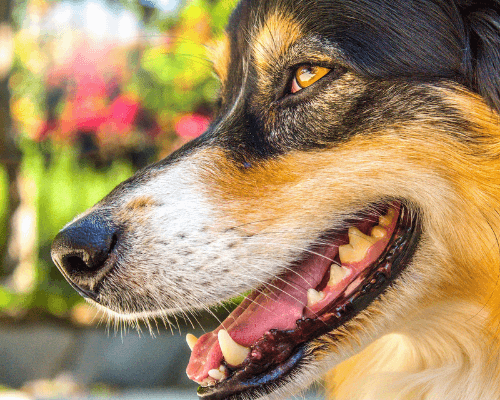
These cysts are named after the sebaceous glands which produce an oil on your dog’s skin called sebum…
Sebum is what helps keep hair and skin shiny, but there are times when it can thicken up and clog up pores which results in cysts…
Sebaceous cysts can appear on different parts of your dog’s body aside from just his mouth and face, and they look like a white or faintly blue raised bump…
They may sometimes burst, and if they do, they can have a white, gray, or brownish discharge.
How Are Sebaceous Cysts Treated?
Sebaceous cysts will resolve on their own when they’re left alone because they’re benign…
The problem is that they can be a bit difficult to differentiate from other bumps that might be cancerous…
Because of that, they can sometimes be surgically removed and then examined for potential health problems your dog might have…
If you suspect that your dog’s bumps are cysts of any type, you should contact a vet immediately…

3. Dog Vibrissae…
Another explanation for why your dog might have bumps under his whiskers is that the whiskers are vibrissae…
Dogs have a collection of nerves around their lips, mouths, and muzzles and the whiskers that come out of these areas are called vibrissae…
A dog’s vibrissae are very sensitive to touch because their purpose is to give your dog information about his or her surroundings…
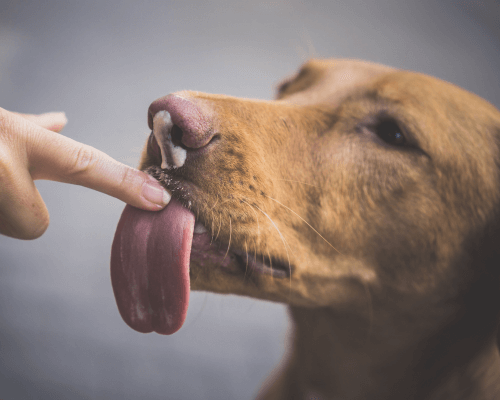
They can help guide your dog when it’s dark outside and when he’s trying to get his bearings and balance. They can also help your dog detect things like changes in the wind…
Sometimes vibrissae can grow out areas of dark-colored skin on your dog’s face and sometimes they can come out of large lumps…
All that said, they are perfectly normal and a good thing for your dog to have.
4. An Allergic Reaction…
Another potential reason why your dog has bumps under his whiskers is because he’s having an allergic reaction…
Like we humans, dogs can have allergic reactions for a variety of reasons. Sometimes it’s because they have food allergies…
Other times, it’s because your dog has a skin allergy that gets brought on by fleas or ticks. It can also be something like an acute allergy which could be caused by a bee sting or a bug bite…
It’s not uncommon for dogs to have itchiness and hives as symptoms of these allergies. Your dog might also have symptoms like:
- Redness of the skin
- Inflammation
- Swelling of the face
- Vomiting
- Diarrhea
If you think that your dog‘s bumps are the result of an allergic reaction, you should contact a veterinarian immediately…

5. An Infection…
It’s also possible that the bumps you’ve noticed from your dog are being caused by an infection…
Usually, if that’s the case the bumps will appear red in color, and there may be some other symptoms accompanying them such as…
- Fever
- Trouble breathing
- Loss of appetite
- Lethargy/Listlessness
If your dog has canine acne like I mentioned earlier, it is possible that the acne can lead to an infection…
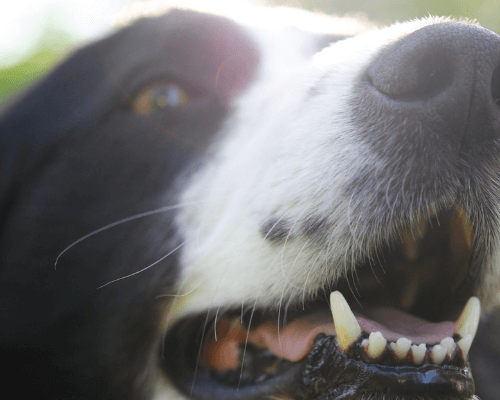
But that being said, an infection could be caused by a number of other issues as well…
The best thing to do is to describe the bumps (and any other symptoms) to a vet who will be able to easily diagnose an infection…
If your dog does have an infection, there are a number of antibiotics that may be used to treat it, but many of them will require a prescription from a vet.

Wrap Up…
So in summary, there are many potential reasons why your dog has bumps under his or her whiskers…
Some of these reasons are nothing to worry about, but others should be looked at and treated by a veterinarian…
And the bottom line is this, if you have any anxiety or worry that the bumps you’re seeing on your dog could be harmful, you should contact your vet to discuss the issue…
After talking with the vet, if it turns out the bumps are harmless, you’ll be able to breathe easier and not worry…
And if it turns out that the bumps are a problem, your dog will get the medical care that he or she needs to resolve the issue.